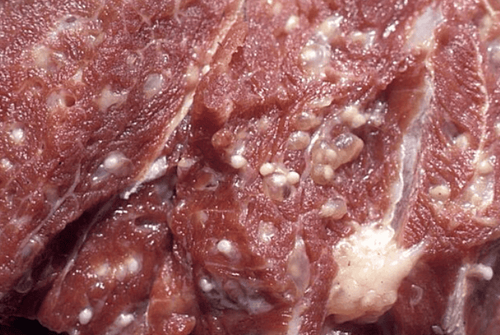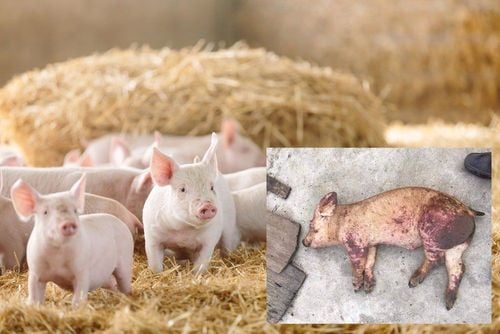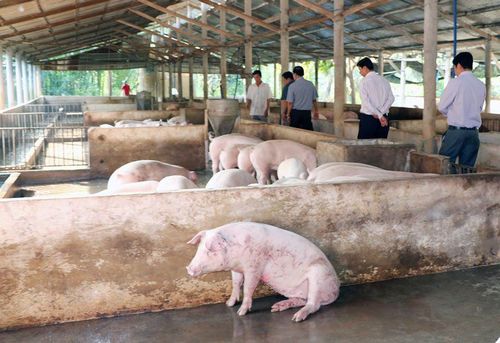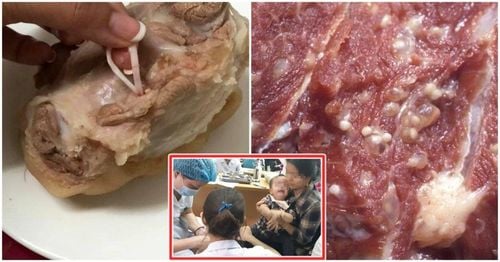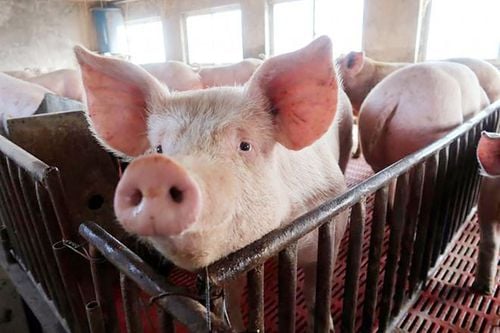This is an automatically translated article.
Classic swine cholera is caused by a highly resistant virus, belonging to the Flaviviridiae family, that can survive in pig houses at temperatures around 37 degrees Celsius. The cause of the outbreak is due to sanitation problems. is not guaranteed, decontamination and sterilization are not carried out periodically to eliminate pathogenic bacteria and viruses.1. At what temperature does the swine fever virus survive?
Classic swine cholera is caused by a highly resistant virus, belonging to the family Flaviviridiae, which can survive in pig houses at temperatures around 37 degrees Celsius. The cause of the outbreak is due to the sanitation problem. The farm is not guaranteed, does not conduct decontamination and periodic disinfection to eliminate pathogenic bacteria and viruses. The virus that causes swine fever, when appearing in livestock cages, will be destroyed at a temperature of 60oC within an hour. Infected pigs will show very clear symptoms of swine fever and are also easily distinguishable from other diseases.
Swine fever is classified as a dangerous disease because the cause of the disease comes from a virus, with a mechanism of rapid spread and through many different transmission routes. Swine fever is likely to be transmitted through the digestive tract when eating, through the respiratory tract, through skin areas with scratches, through semen of infected pigs. The virus that causes swine fever can go out of the body of infected animals through feces, urine, and saliva, and so the ability to spread to other animals in the herd is very high. Swine Fever can be transmitted from mother to piglets. Symptoms of swine cholera vary according to the type of disease.
When the swine fever virus attacks the pig herd in the breeding area, the pigs will get sick, the disease progression is very fast, the incubation period is very short, only 5-7 days, so swine fever is easy to develop. into translation, more difficult to control. The mortality rate in pigs infected with cholera is about 80% - 100% once infected. Swine cholera leads to heavy economic losses, affecting livestock households.
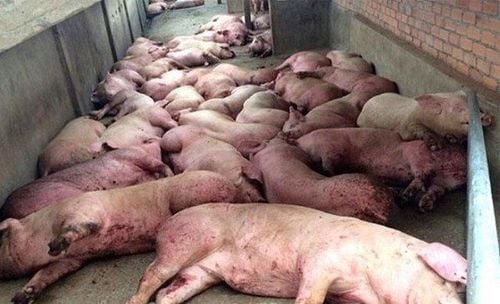
Bệnh tả lợn gây tổn thất kinh tế nặng nề
2. Swine cholera symptoms by grade
2.1. Super-acute form in pigs Symptoms of swine fever in the super-acute form are pigs with fevers as high as over 40 degrees Celsius. Pigs stop eating, move sluggishly, and become lethargic. In thin skin areas such as the parotid, inguinal, and abdominal areas, many strange red nodules appear and will gradually turn purple after only a few hours or days.
Super-acute swine cholera is common in piglets, with sudden onset, high mortality, progressing after only 1 to 2 days but without any obvious symptoms.
2.2. Acute swine cholera For the acute form, swine fever symptoms develop depending on the disease state from 8 to 15 days. Most pigs die due to emaciation and exhaustion. The first visible symptom is a pig with a high fever above 40 degrees Celsius. Pigs become tired, lie on top of each other, and move slowly. Symptoms of fever persist from the onset of the disease until death.
Besides, pigs have diarrhea after a few days of constipation, this phase of diarrhea may be accompanied by fresh blood, loose stools, yellow color and fishy smell. Symptoms of swine fever in acute form include signs of vomiting, difficulty breathing, runny nose, when the disease is severe, pigs can only breathe. Pig's eyes turn red due to severe inflammation of the eye mucosa. In addition, the mucosal areas of the mouth, snout, tooth roots, and tongue appear yellow or gray indentations. Thin areas of skin also appear red-to-purple nodules similar to those in the super-acute form.
For more severe cases, pigs have paralysis of the hind legs, neurological disorders, unsteady walking, convulsions, and crooked head. In pregnant sows, the risk of miscarriage in the early stages of pregnancy, or stillbirth in the mid-term, or the possibility of premature birth, the piglets born are extremely weak and often die premature death due to illness.
2.3. Symptoms of chronic swine cholera Chronic swine fever is common in pigs from 2 to 3 months of age, developing from acute to chronic. For the chronic form, the pig's bowel movements are not normal, sometimes it's constipated, sometimes it's diarrhea. Pigs often cough and have difficulty breathing. The thin skin on the body is peeled in patches, many red spots appear on the skin and gradually turn purple. At this stage, the disease progresses for a long time, lasts from 1 to 2 months, causing pigs to become emaciated and die from exhaustion.
Chronic swine fever often causes great damage to the livestock economy because people often have the mentality of trying to treat their pigs, which costs a lot of food and medicine. Meanwhile, the mortality rate of pigs in all diseases is the same, and the control of cholera is much more difficult than with other diseases in pigs.
3. Effective prevention of swine cholera
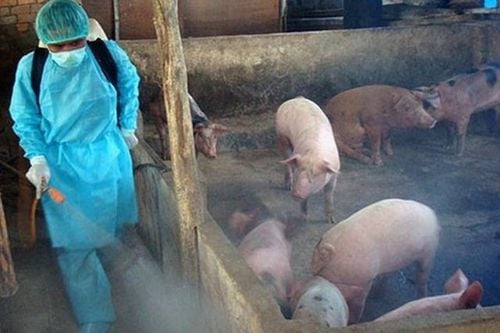
Vệ sinh chuồng trại để phòng dịch tả lợn
Strengthen the hygiene of the barn both inside and outside, everywhere from the entrance to the farm, the place where the vehicle is weighed, and the surrounding area. around the breeding area and the dead pig treatment area. The exit and entry gates of pigs must have holes to conduct disinfection, equipped with disinfectant sprayers, disinfectant trays/pits are available at each end of the farm and water is changed daily. Vehicles that go in and out of the farm frequently such as pig trucks, bran transfer carts, 2-wheelers, etc. need to be sprayed with disinfectant against swine cholera thoroughly before entering the breeding area. Limit leaving staff out of the camp unless absolutely necessary. Limit the maximum number of people entering the camp, when entering, they must go through a disinfecting area, shower with soap and isolate for at least 24 hours before they can leave the camp. There are measures to take care of the pig herd carefully, prevent diseases with vaccines such as cholera, blue-eared pig (PRRS), foot-and-mouth disease, fake rabies, circovirus infection... In addition, farmers can can add vitamin C, group B vitamins, Beta glucan to enhance the resistance ability of pigs. The pig import process needs to ensure a clear pig origin, there must be a separate area to isolate newly imported pigs, to facilitate monitoring of health status, and to comply with the pig import process. Monitoring the health of the whole pig herd daily, if disease is detected, it is necessary to have timely solutions. Swine cholera is a threat to the livestock industry. People need to take preventive measures to be able to proactively protect their pigs against the risk of dangerous diseases.
Please dial HOTLINE for more information or register for an appointment HERE. Download MyVinmec app to make appointments faster and to manage your bookings easily.




